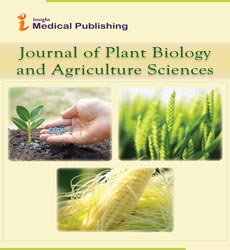Determination of Genetic Diversity in Sclerotium rolfsii and Sclerotium delphinii by using RAPD and ISSR Markers
Mukundpur forest range is situated in Amarpatan Tahsil of Satna district of Madhya Pradesh India. The range has geographical area of 589.71 km2 with forest area111.55 km2 . This area is under high disturbances and ecological stress due to manmade activities, the associations of soil parameters like pH, electrical conductivity, availability of major nutrients (Nitrogen, Phosphorous and Potassium) and micro nutrients like (Copper, Manganese, Iron and Zinc) with forests density are analyzed. This will help for the restoration of density of present forests for management purposes. The result indicates that all density classes soil pH does not change significantly. Electrical conductivity plays an important role in various density classes. In blank, encroachment and stocked density classes organic carbon content is significantly higher than the average value of organic carbon content of the study area. The forest soil till it remains in natural state and there is no breaking of land takes place, it tries to retain and check the organic matter content. As long as forest of the study area remains in UN degraded state, the average value of available nitrogen maintains the average value of study area. The observed value of available phosphorous in kg/ha maintains its average value of available phosphorous till the degradation in density take place from stocked forest to blank forest, but breaking of land in encroachment category increases the available phosphorus. The average value of available K2O in blank, encroachment and stocked classes do not change significantly with average K2O value of study area. The average value of Zn, Fe, Mn and Cu in encroachment category changes significantly with average value of the study area. When we take combined effect of pH, electrical conductivity and organic carbon on study area it indicates no significant association with respect to various density of classes. Similarly when we take the combined effect of macro nutrient (nitrogen, P2O5, K2O), and micro nutrient (Zn, Fe, Mn and Cu) on study area these combined parameters do not indicate significant association with respect to various density classes
Open Access Journals
- Aquaculture & Veterinary Science
- Chemistry & Chemical Sciences
- Clinical Sciences
- Engineering
- General Science
- Genetics & Molecular Biology
- Health Care & Nursing
- Immunology & Microbiology
- Materials Science
- Mathematics & Physics
- Medical Sciences
- Neurology & Psychiatry
- Oncology & Cancer Science
- Pharmaceutical Sciences
